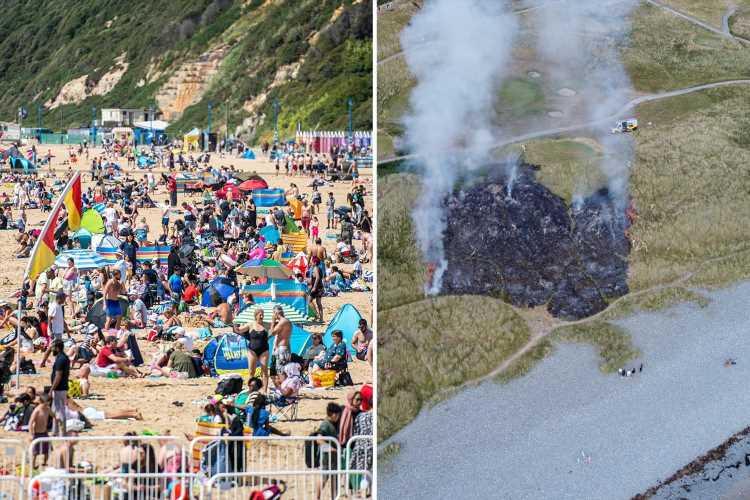MORE than 150 million Americans from the West to the Northeast are bracing for another major, multi-day heatwave with temperatures in parts country tipped to reach upwards of 110F.
As a result of the heatwave, which began on Wednesday, Excessive Heat Warnings have been issued in several major areas across the US, including in New York City, Portland, Seattle, Philadelphia, and Kansas City.
The National Weather Service (NWS) has warned that "dangerously hot conditions" are expected in some parts of the country, particularly the Pacific Northwest.
'ABNORMALLY HOT'
"Abnormally hot conditions" will remain across much of the US mainland, including the Northeast, Mid-Atlantic and mid-section of the country, through mid-week, NWS said.
Heat warnings have also been put in place elsewhere in New York State, Washington, Missouri, New Jersey, Delaware and Idaho.
The warnings are set to remain in place until at least Saturday.
In Oregon, meanwhile, Gov. Katie Brown declared a state of emergency on Tuesday as the region braced for triple-digit temperatures.
This week's heatwave comes just a month after record-shattering hot weather killed hundreds in the Pacific Northwest when temperatures soared to 116 degrees Fahrenheit.
TRIPLE-DIGIT TEMPERATURES
In a “worst-case scenario,” the temperature could reach as high as 111F in some parts of western Oregon by Friday before a weekend cooldown. It's more likely temperatures will rise above 100F for three consecutive days, peaking around 105F on Thursday, NWS Portland said.
In Spokane, Washington, meanwhile, temperatures are expected to climb into the lower 100s, and possibly reach 109F by Friday.
Areas in southwestern Oregon and Northern California are expected to see similar conditions, with temperatures forecast to hit the lower 100s through the rest of the week. Those regions are currently under Heat Advisories.
While the temperatures won't be as high as those seen in late June and early July, the heat could still have negative health effects.
In announcing the state of emergency, Brown said: "Oregon is facing yet another extreme heatwave, and it is critical that every level of government has the resources they need to help keep Oregonians safe and healthy.”
CONCERN FOR VULNERABLE
The declaration took effect at midday on Tuesday amid concerns over the safety of residents – many of whom do not have air conditioning.
The searing heat could also have a significant impact on critical infrastructure, Brown warned.
As a result, city and county governments are opening cooling centers and misting stations in public buildings, extending public library hours and waiving bus fare for those headed to cooling centers.
A statewide helpline will direct callers to the nearest cooling shelter and offer tips on how to stay safe.
The back-to-back heatwaves, coupled with a summer that’s been exceptionally warm and dry overall, are pummeling the Pacific Northwest where summer highs usually drift into the 70s or 80s.
Both the heat and a historic drought across the American West reflect climate change that makes weather more extreme in the historically temperate region.
The June heat in Oregon, Washington, and British Columbia killed hundreds of the states' most vulnerable residents.
In Oregon, officials say at least 83 people died of heat-related illness, and the hot weather is being investigated as a possible cause in 33 more deaths. Washington state reported at least 91 heat deaths, and officials in British Columbia say hundreds of “sudden and unexpected deaths” were likely due to the soaring temperatures.
The toll exposed huge blind spots in emergency planning in a region unaccustomed to dealing with such high temperatures, Vivek Shandas, a professor of climate adaptation at Portland State University, told the AP.
Most of those who died in Oregon were older, homebound, and socially isolated, and many were unable, or unwilling, to get to cooling centers.
Source: Read Full Article











